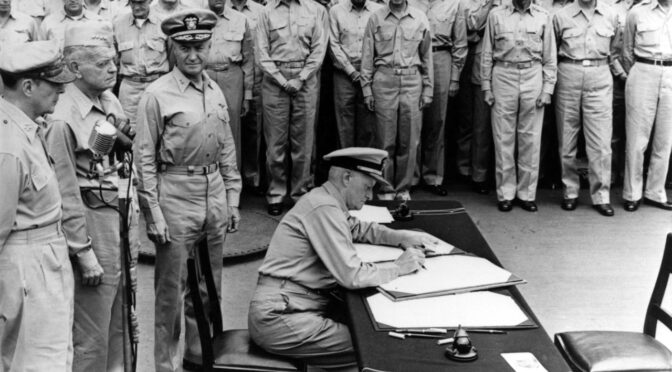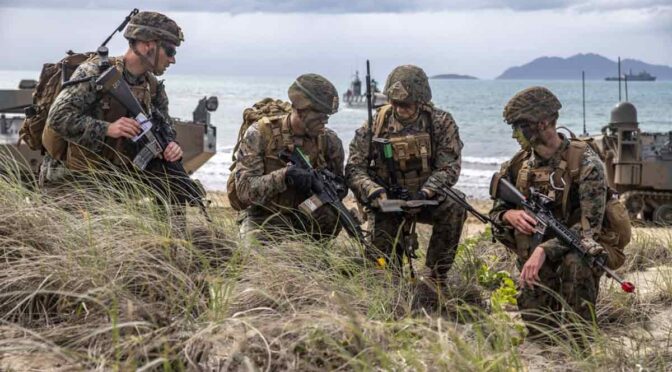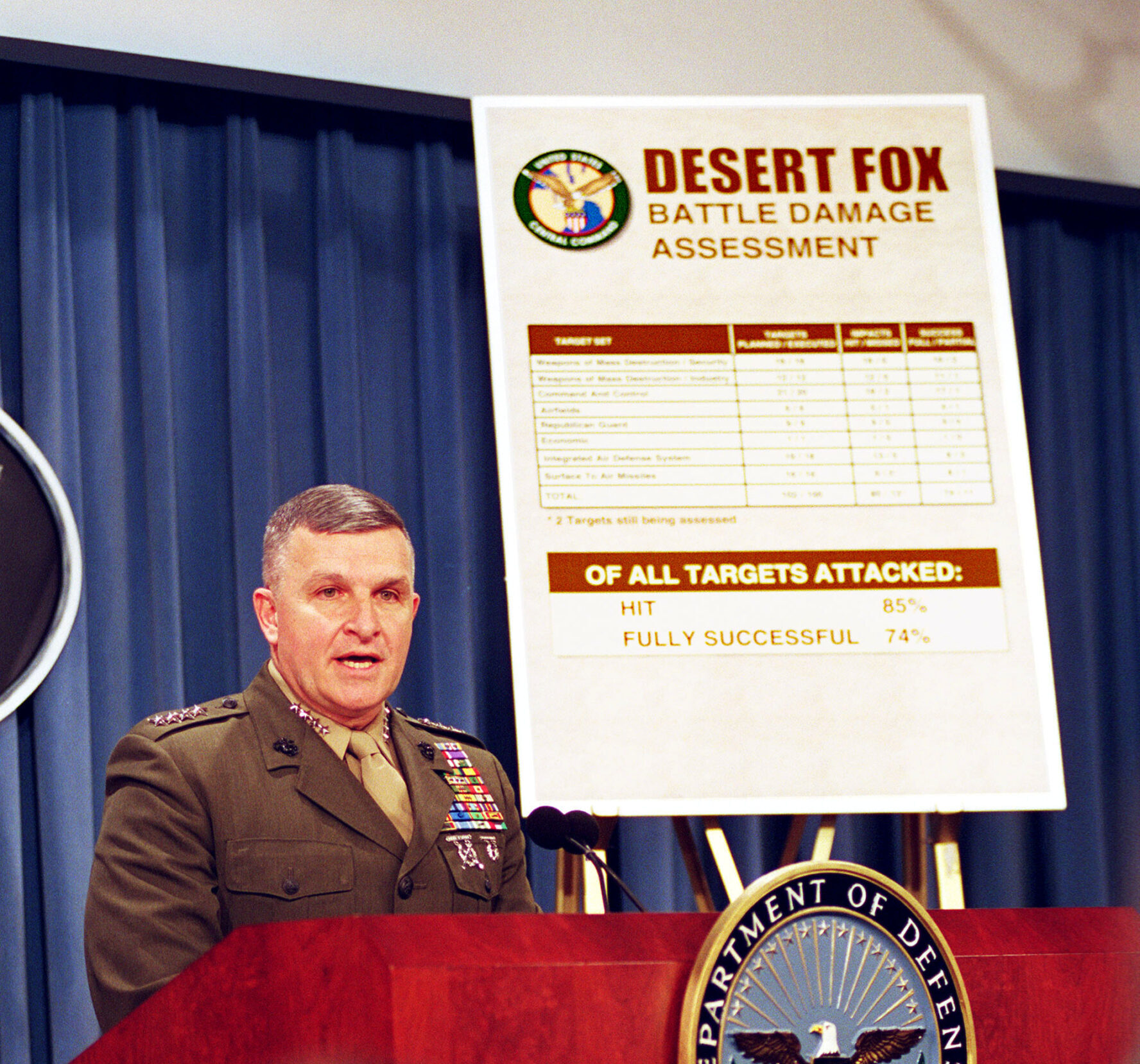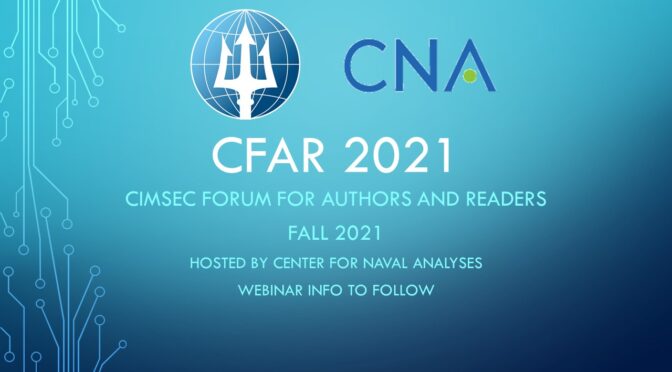Read Part One here.
By Robert C. Rubel
In her recent CIMSEC post Congresswoman Elaine Luria called for the development of a new maritime strategy. Among its purposes would be the rationalization of Navy shipbuilding plans; linking force structure to the provisions of a strategy in a way similar to the relationship between the 1980s Maritime Strategy and its attendant 600 ship Navy. This is almost self-evidently a good idea, but there are difficult aspects to any such project, a key one being the role of a theory of victory in shaping it. Luria posits, quite reasonably, that what constitutes winning should be successful deterrence based on a clear capability to deny a fait accompli to any aggression by China, Russia, or other power. She uses a 2017 Center for Strategic and Budgetary Assessments (CSBA) force structure study as an example of a fleet architecture that might fill the bill with some modifications.
That might prove sufficient, but there is the nagging problem of how the US might end a war if deterrence fails. In one sense that question is beyond the bounds of a peacetime strategy since the exact reasons for and particular circumstances of a war breaking out cannot be known in advance, and of course what happens in a war can have a huge effect on how it ends. That said, if deterrence is based on the assumption of a quick, decisive victory, it is precarious, especially if the government we seek to deter perceives that we are limited by that assumption. A useful theory of victory must thus extend beyond the repulse of an enemy’s initial thrust.
A Royal Navy officer once asserted to this writer that the RN’s greatest strategic asset was its reputation for reckless persistence. Whether one buys this or not, the sentiment— that perceived irrationality has a deterrent effect—is worth considering.. Put another way, the perceived willingness of a country to continue fighting beyond the point at which a rational calculation suggests that it should yield might confound the potential attacker’s estimates of what it would take to win.
Theory describes capability and will as the constituent elements of deterrence, but will to enter into a fight is not the same thing as the will to see it to the bitter end, and historical opponents from Great Britain, to the Confederacy, to Japan, to bin Laden have underestimated America’s will in this regard, leading to ill-advised attacks. The will to persist must be an element of any deterrent strategy, and it must be supported by the unambiguous capability to do so. In general, American doctrine focuses on ending combat as quickly as possible, despite the grinding, long term conflicts in Vietnam, Iraq and Afghanistan. Deliberately trying to protract a conflict seems counter to US values, and yet the willingness to do so is precisely what “deep deterrence” requires and thus is a needed element of any theory of victory for a new maritime strategy.
It is one thing to assume the necessary political support for protracting a conflict would materialize – after all the American public has repeatedly supported long wars, from the Revolution to Afghanistan – but quite another to understand how conflict protraction fits into developing a strategy. For that we need to engage in some parsing of defeat mechanisms and the ways force might be used to achieve them. In military planning, developing lists of enemy options and own courses of action that are mutually exclusive and collectively exhaustive, when possible, help to bound the problem, and we will try to do that with defeat mechanisms and uses of force.
There are essentially four ways an enemy can be brought to defeat. Their capital can be overrun and the country occupied, such as what happened in Germany in 1945 and Iraq in 2003. This is a maximal solution, and even then, as in the Iraq case, a lengthy insurgency followed. Perhaps a more desirable defeat mechanism is when the enemy government suffers internal collapse, as did the Italian Fascists in World War II. This greatly helps the victors establish a friendly government and legitimize and defend the victory.
A third mechanism is what we will call “checkmate”; the enemy, although still capable of resistance, decides that it no longer has a viable military strategy available and calls for terms. This is the ideal end state of maneuver warfare, including such transformation era concepts as shock and awe and rapid, decisive operations (RDO), not to mention network-centric warfare. The key characteristic of this defeat mechanism is that cooperative decision making by the enemy is required, but cannot be controlled. If the enemy is unaccountably stubborn – recklessly persistent – then the whole strategic edifice of maneuver warfare falls apart. The last defeat mechanism is exhaustion; the enemy’s force and/or political will has run out over the course of an attrition campaign of some sort. The US has suffered losses of this sort in Vietnam and Afghanistan.
When contemplating a war with China, we might hope for a checkmate based on the destruction of much of the PLAN, which might, in the ideal case, lead to the collapse of communist rule or at least the displacement of its war faction. Overrun is off the table, so the other mechanism available is exhaustion, which means that the US, in order to achieve deep deterrence, must contemplate engaging in a protracted war of attrition. While a checkmate is clearly the preferable path, any American strategy must entertain the potential need to exhaust the Chinese. This may be feasible even given China’s advantages in manpower and industrial capacity – the new strategy must explicitly deal with it.
Force must be used in one way or another to bring about one of the defeat mechanisms. In today’s world of weaponized information, force could take any number of forms, but regardless, can only be used in one of four ways. The first is definitive; that is, the use of force directly solves the problem without any need for the enemy to make a decision. Overrunning the enemy is one example. But defeat of the enemy fleet might be another. Taking away the enemy’s ability to move his army by sea or otherwise use the sea to his advantage might produce a checkmate. It did at Salamis and Lepanto and again in the English Channel in 1588. Modern examples in which a naval defeat ended a war are hard to come by, especially due to air power and missiles, but it at least removes a key strategic option for the enemy.
The capability to inflict a definitive naval defeat is central to the notion of deterrence by denial. That said, in the event of war, even after a defeat, the enemy might have options for some type of naval guerrilla warfare such as the German U-boat campaigns in both world wars. Usually any such effort requires some sort of sanctuary for a base as well as tactically. For the German U-boats, bomb proof submarine pens were the base sanctuary and the stealth of the U-boats constituted the tactical sanctuary. Mobile land-based anti-ship missile launchers and underground submarine bases might fill the bill for the Chinese. Moreover, if national policy forbids attacks on the Chinese mainland to avert escalation, PLAN ports might continue to support small craft or other types of attritional operations, forcing the USN to engage in some version of a protracted sea denial campaign.
The second way to use force is coercively. This is where deterrence by punishment comes in. There are problems with this use of force. What degree of destruction or threat would be sufficient to bring the enemy to terms? This use of force requires cooperative decision-making by the enemy; that is, the enemy has to decide to quit. The coercer is not in charge. Calculating in advance of a war what level of pain or threat would be sufficient to induce the enemy government to call for terms – something that could very well be politically or even physically fatal to its members – is an imponderable. Even the enemy would not know what would induce them to make terms. A strategy based on this use of force is inherently open-ended and could easily require the application of force in degree, kind, and duration beyond what the coercer is willing to or can generate. Thus coercion is a dangerous basis for deterrence.
The third use of force is catalytic. When Saddam Hussein launched Scud missiles at Israel during Operation Desert Storm, there were no specific targets for them. Rather, he hoped to spur Israel into joining the war against him, which, he further calculated, would fracture the coalition. He was looking for second and third order effects. This way of using force is seductive; it promises effects out of proportion to the amount of force used. This was the tacit basis for the effects-based operations (EBO) doctrine of the 1990s and early 2000s. The problem is trying to calculate effects. In Saddam’s case it did not work and this is frequently the case. The 1942 Doolittle Raid on Tokyo and the 1940 Royal Air Force strike on Berlin each ended up having important catalytic effects in that they dislocated enemy strategy, but those effects were not the objectives of the raids; they were serendipitous. Rather, those raids reflected the fourth way to use force – expressively.
The expressive use of force is not oriented on a particular military objective; it is simply meant to harm. Reprisals are a form of this use of force, as are operations whose objective is oriented on the domestic audience. The Doolittle Raid was of this sort, meant to increase American public morale. The fact that it ended up having beneficial catalytic effects – strengthening Yamamoto’s resolve to conduct the Midway operation – was unintended. Given the imponderables attending the calculation of coercion, deterrence by the threat of punishment is based on an expressive use of force and is thus of suspect effectiveness. It is simply an easy way out of a strategic planning conundrum. It is all too easy to fall into the “this will fix ‘em” trap in which expressive force is ascribed to have coercive effects. The author has seen this in actual operational planning.
All of this leads to the conclusion that the only rationally defensible basis for conventional deterrence in the Far East is an unambiguous ability to use definitive force; that is, sinking or damaging enough of a Chinese invasion fleet that its operation to seize Taiwan or close off the South China Sea is disrupted or defeated. But this is not enough. The US must also possess an unambiguous capability to fight a protracted struggle in the Chinese littoral. The end state of such a war cannot be predicted and thus cannot be part of the deterrence calculus; but a reputation for “reckless persistence” would make it harder for Chinese strategists to predict an end state, and it is more critical for the attacker to envision an end state than it is for the defender. An authoritarian regime is inherently insecure, which is why such regimes employ repression, so any military setback could end up having catalytic effects, optimally regime collapse. It is likely that at least some Chinese Communist Party leaders understand this (a PLA colonel once told the author that if the Party could not recover Taiwan, China would “fall apart”) and would hopefully inject caution into any strategic calculations.
We can now better illuminate Congresswoman Luria’s discussion of “what constitutes winning” as a component of a new strategy. While not fighting China would, in retrospect, constitute a win, that cannot be the basis for deterrence; if the Chinese perceived avoiding war at all costs to be America’s strategic goal it would be an incentive, not a deterrent. Rather, a clear ability and dogged intent to defend Taiwan and a free and open South China Sea must be the basis for a new strategy. This is rather simple, but as Clausewitz said, “Everything is very simple in war, but the simplest thing is difficult.” Much has been written about the balance of forces in the East Asian littoral and that will not be rehashed here. But Congresswoman Luria’s call for a new strategy is a result of wanting the Navy to link its budget requests to strategy, so some additional consideration of the link between strategy and force structure is appropriate.
In a very real sense strategy is nothing more than problem solving, and for that to be successful one must accurately articulate the problem to be solved. In the present case, the problem is not how to deter China, it is how to defeat a Chinese invasion of Taiwan and deal with any follow-on moves by China; their “plan B or C.” This is a hard and threatening problem, but it is the one that must be solved. But it is not the whole problem. As discussed in part one of this series, the US must continue to exercise its command of the sea globally because there are threats to the world order in other regions and the US strategy is to defend the world order.
The Navy budget deals with its overall ability to support US grand strategy and so any new maritime strategy must be global. A key – perhaps the only – strategic principle is that the US must not risk its overall command of the sea during instances of its exercise, so whatever solution is adopted for the East Asian littoral must not violate that principle. This author and others have long advocated the use of smaller, cheaper missile firing vessels to solve the problem of disrupting Chinese naval aggression, and the Navy is moving that way, albeit too slowly and hesitantly. Congresswoman Luria’s advocacy of the CSBA force structure is a step in the right direction.
It is one thing to develop a contingent strategy to solve a particular warfare problem when it arises, and quite another to craft a systemic strategy meant to deal with a range of possibilities over the long term. The overall US maritime strategy of ringing Eurasia with sea power to defend the international order is an example of a systemic strategy, as was the 2007 Cooperative Strategy. The 1980s Maritime Strategy was contingent at heart – steps to counter a Soviet invasion of NATO – but it had systemic effects as the USN exercised portions of its planned execution and thereby intimidated the Soviets. It was the contingent aspects of the Maritime Strategy that linked well with Navy budget requests of the era. Similarly, a new strategy must have clear and practical contingent elements to it, but in this case there is a time element that must be dealt with. In the case of the 1980s Maritime Strategy, most of the 600 ship Navy already existed, and it took only a few years for the Navy to flesh out its desired fleet architecture. Today, especially if a new fleet architecture is needed, much more time would be required to achieve it. This is clearly reflected in the various future fleet proposals that forecast one or more decades to achieve the projected architecture and size. But geopolitical conditions are evolving much faster than that – Admiral Davidson, in his departing remarks as Commander of the Indo-Pacific Command asserted that China may invade Taiwan as early as 2027 – so a new strategy must have a phase that deals with the near term and another for the longer term because Navy budgets will have to include both near term fixes and funding for long lead time items.
Following the logic contained in the present discussion, a new strategy must first deal with how to defeat a Chinese attack in the short term and then how to deal with a protracted war in the long term, all the while maintaining and exercising global command of the sea. In a very real sense, part of “what constitutes winning” is the ability of the strategy to galvanize Congressional and public support for the kind of budgets needed to ensure its successful execution. This is what former Secretary of the Navy Lehman used the Maritime Strategy for. But there is another aspect just as critical: eliciting international support. This was the real success of the 2007 Cooperative Strategy, and the 2020 Tri-Service Maritime Strategy document repeatedly calls for greater international naval cooperation. The development process and wording of CS21 was calculated to elicit such support in the arena of maritime security, and it is worth considering a similar approach to a new strategy – making its development a widely collaborative project vice a small cadre of officers in a cipher-locked Pentagon office.
In the end “what constitutes winning” is a multi-faceted construct, parts of which are internal to the strategy – its content – and other parts external to it – the medium. In order to be successful, Navy strategists must take heed of the concept forwarded by the 60s communications guru Marshall McLuhan: the medium is the message. It will be perhaps the most complex strategy project the Navy has ever undertaken and simply relying on clever wording will be dangerously insufficient. Its development must be supported by wargaming (as both the Maritime Strategy and CS21 were) and extensive consultation, analysis and collaboration, both within DoD and externally with Congress, other Cabinet departments and perhaps internationally. In this writer’s opinion it can be done, but it will require intellectual and bureaucratic flexibility on the part of the Navy and a commitment on the part of the current and future Administrations to prioritize the rebuilding of the fleet.
Robert C. Rubel is a retired Navy captain and professor emeritus of the Naval War College. He served on active duty in the Navy as a light attack/strike fighter aviator. At the Naval War College he served in various positions, including planning and decision-making instructor, joint education adviser, chairman of the Wargaming Department, and dean of the Center for Naval Warfare Studies. He retired in 2014, but on occasion continues to serve as a special adviser to the Chief of Naval Operations. He has published over thirty journal articles and several book chapters.
Featured Image: Tokyo, September 2, 1945 — Fleet Admiral Chester Nimitz signs the Instrument of Surrender as United States Representative, on board USS Missouri (BB-63). (U.S. Navy photo)




